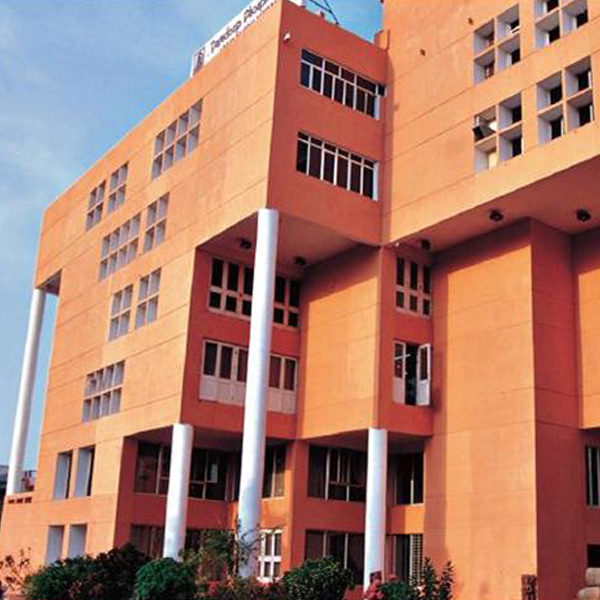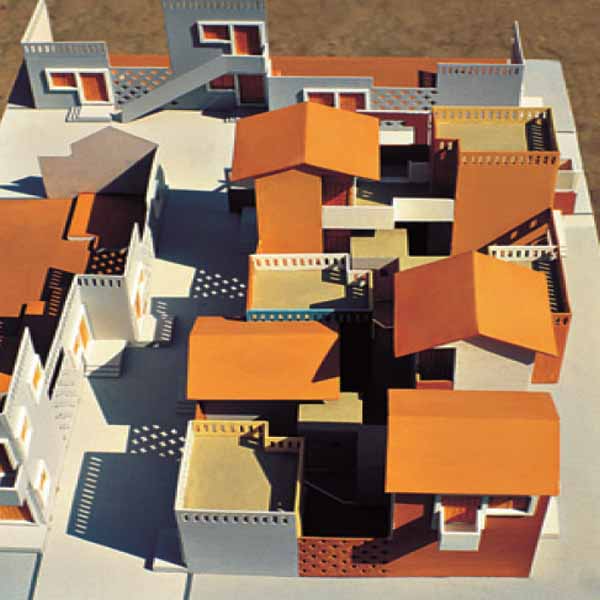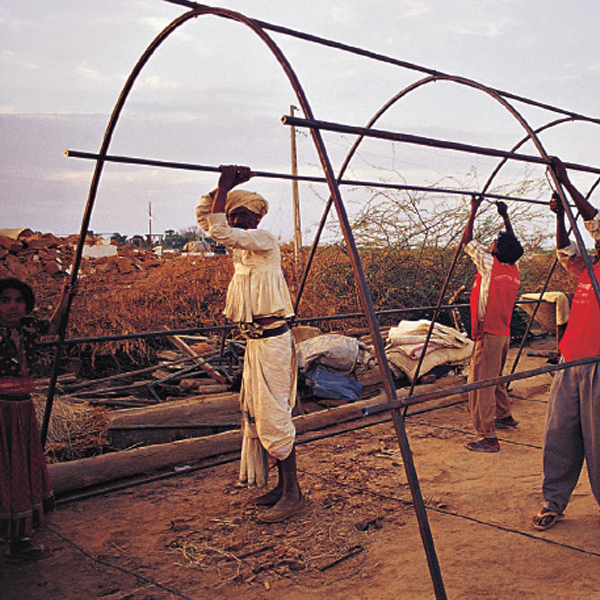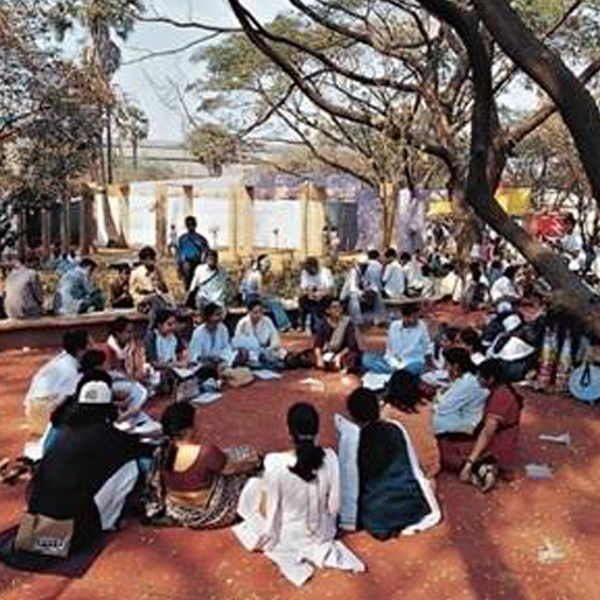



SPACES WE SHARE
Shared common spaces bring people together, they comfort and rejuvenate. They give people a sense of belonging and commonality of purpose. Conceived as courts, streets, avenues, atria, terraces, verandahs, galleries, squares, forums, they form, individually and together, the most vital elements in all my design projects. Their interaction and networking extend relationships and nurture a spirit of solidarity. Such spaces are extremely essential today when urbanization and privatization considerably downsize them and seriously affect social development and community life.
Thus, while built environments are generally evaluated by their exclusivity, I would accord the highest value to the ‘inclusiveness’ that they provide. Shared public spaces reflect the dignity accorded to the collective, to collective effort and control. In villages, towns and cities, public spaces add to the quality of community life. So also in built environments, building complexes and in individual buildings, spaces which connect the different functions should be developed to reinforce the value of participation and sharing. I believe that open, inclusive, social interaction draws on the intelligence, enthusiasm and energy of all the differently trained and skilled individuals in a group and forms the basis for truly democratic and co-operative action. It offers each individual member the strength, confidence and common purpose of the collective.
It is this common purpose and mutual relationships that give shared common spaces a dynamic character and not the mere physical statement of the buildings or their embellishments. This belief has resonated so strongly in my architectural practice that shared common spaces have become the backbone of all my designs, even for very compact offices and residential interiors. Despite the high cost of space in cities and the consequent demand by clients to pack in as many functional, private, independent cabins and rooms, I have resisted the tendency to view connecting spaces as conveyor belts or relegate them to mere dingy, connecting corridors and waiting areas. Rather, I have transformed these marginal spaces into vibrant areas for lively interaction and often networked them in a manner that the expanse also provides relief from the highly built urban spaces outside and the busy workspaces within.
A parallel interest also saw me engage enthusiastically in social debates and democratic movements for justice and community welfare. As I closely interacted with people in such movements, I echoed their needs and concerns in the various rehabilitation schemes that I planned for them, in slum redevelopment, in the redevelopment of settlements for the poor and reconstruction of old, dilapidated buildings. This has also reinforced my commitment to public space: creating such networked spaces in the private and social projects that I design, and in reclaiming them from misuse and encroachment, such as the beaches and waterfronts of Mumbai , which have now been largely transformed, in parts, into lively forecourts to the city’s social and cultural activities.
Thus, I look at people as vibrant collectives and not as collections of competing individuals; and this perception forms the basis of all my plans and designs. Our towns and cities, with their different institutions, are, I believe, places for co-operation, not conflict. The central idea is to evoke a spirit of oneness and solidarity in the collective even while inviting democratic, inter- personal and cross-cultural dialogue and relationships in these inclusive, 'open', common spaces.